4 Facebook Algorithm Hacks to Bring Your Reach Back from the Dead
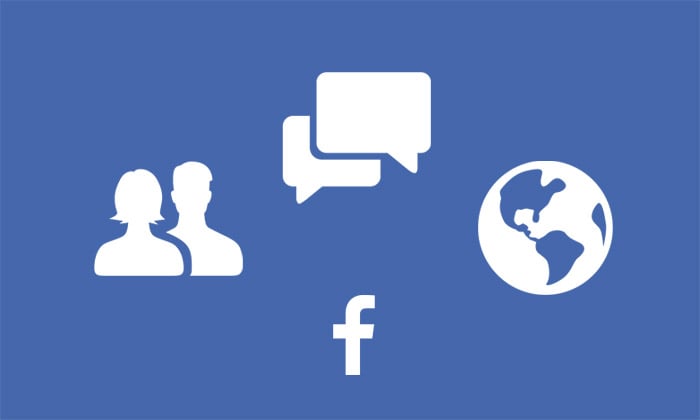
Facebook’s growth has been nothing short of incredible.
They recently hit more than two billion monthly active users, and that number is continually growing.
It’s the most popular, most used social media platform out there.
Which means it’s no wonder that it’s home to more than 2.5 million advertisers and 50 million small business pages.
But with those large numbers come dangerous impacts on organic-based traffic on Facebook.
As advertising numbers and revenue increase, Facebook has less incentive not to push advertising on the rest of us.
If you’re still depending on Facebook fans for organic traffic to your content, you’ve probably started to notice this decline.
After all, Facebook is a business with a single goal in mind: profit.
So it only makes sense that as the user base and advertising demand increase, Facebook will give organic reach second billing behind the profit generator of advertising.
And they’ve been open about this. They have actually told marketers that organic reach will be declining and a need to buy ads will replace it.
This could be a problem if you’re a marketer on a tight budget who has already built up a great organic following on Facebook.
It means that reaching those existing fans is going to be more difficult than ever. Those fans that you spent countless hours (and maybe even dollars) acquiring.
You can no longer connect with them as easily or effectively as you could a few years ago.
But thankfully, there are a few hacks to beat the system and bring back your organic reach.
Here’s why your reach is declining, and four Facebook algorithm hacks to help you combat it.
Why your organic reach is dying
In December of 2013, AdAge dropped a bomb on Facebook advertisers with this headline:

AdAge obtained a sales deck that was sent out to Facebook partners that year which included a direct statement from the social networking site.
Here’s what it said:
“We expect organic distribution of an individual page’s posts to gradually decline over time as we continually work to make sure people have a meaningful experience on the site.”
Facebook was basically telling us that our organic traffic would slowly come to an end over the next few years.
They were letting us know that companies were going to have to start paying for ads to reach people instead of freely reaching them via page posts.
You can bet that this was not well-received in the Facebook Advertising community.
Essentially, Facebook was telling all those marketers who spent years of time and countless dollars growing their likes that it was all for nothing.
And Facebook lived up to their word. Organic reach has been steadily decreasing:
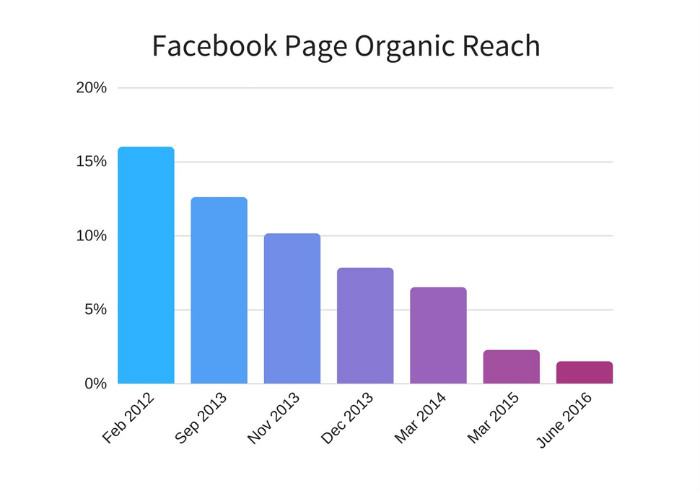
In fact, it’s almost impossible to reach your fan base with organic content anymore.
Even massive Facebook Pages like the Chicago Tribune have suffered.
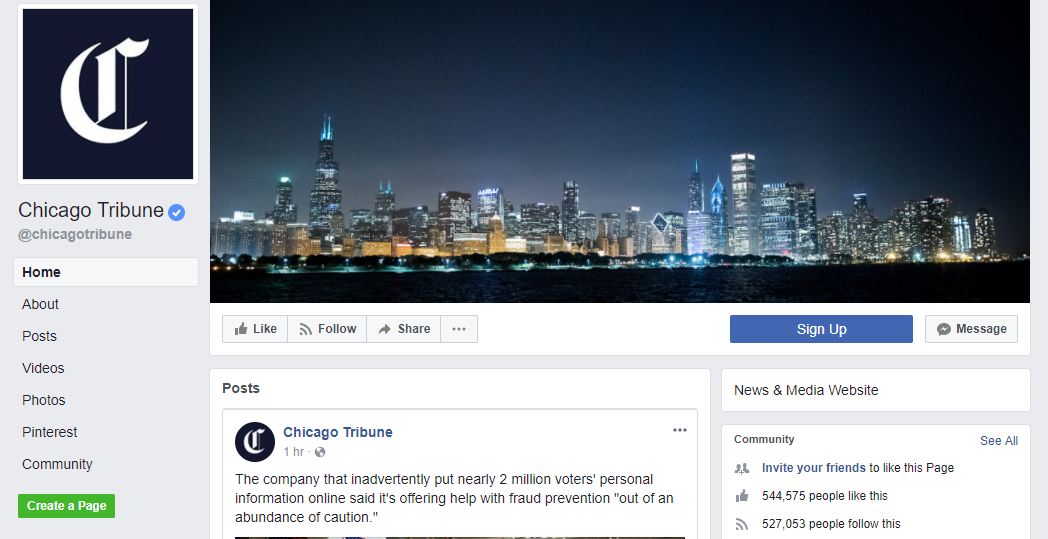
And they have over 500,000 followers and page likes.
An editor at the Chicago Tribune compiled data on the company’s organic reach on Facebook and found shocking results.
The data showed an even sharper decline from 2016-2017 than they had already experienced since the announcement in 2013:
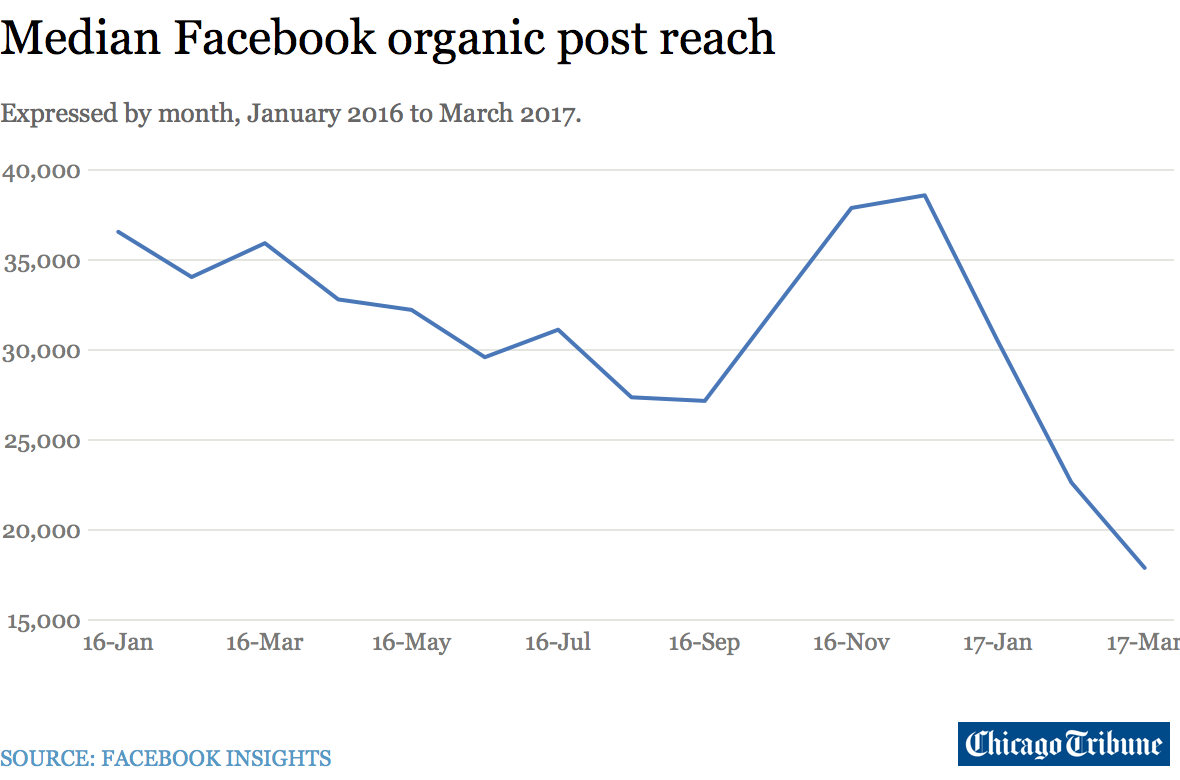
This graph is pretty alarming, to say the least.
In the entirety of 2016, the organic reach for the Chicago Tribune was on a steep yet steady decline.
But when you look at the start of 2017, you notice a serious drop-off.
To do more digging, they inspected 15 months of organic posting data to see if any outliers could have been messing up the data.
Instantly, they found some pretty scary information:
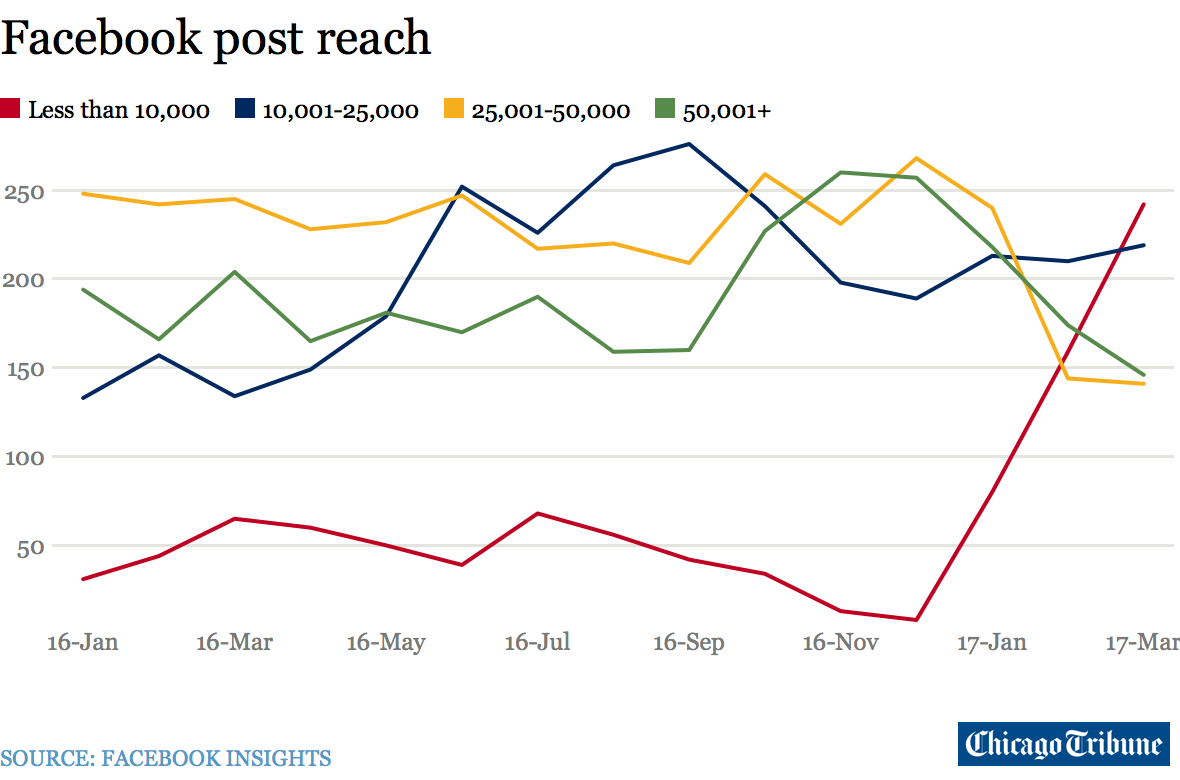
At the start of 2017, there was a massive increase in posts that reached fewer than 10,000 people organically.
This means that all 500,000 of those page fans were not seeing the majority of their content.
Facebook organic reach was declining four years ago and it’s still seeing sharp dips.
So Facebook wants you to advertise on their platform. I’ve got a few tips for you to hack your organic reach, though.
1. Use preferred audience targeting
Facebook instituted preferred audience targeting in 2015 along with audience optimization for organic posts on Facebook to help marketers deliver content better.
This allows users to restrict audiences and target more specific, niche segments of their existing audiences within a single organic post:
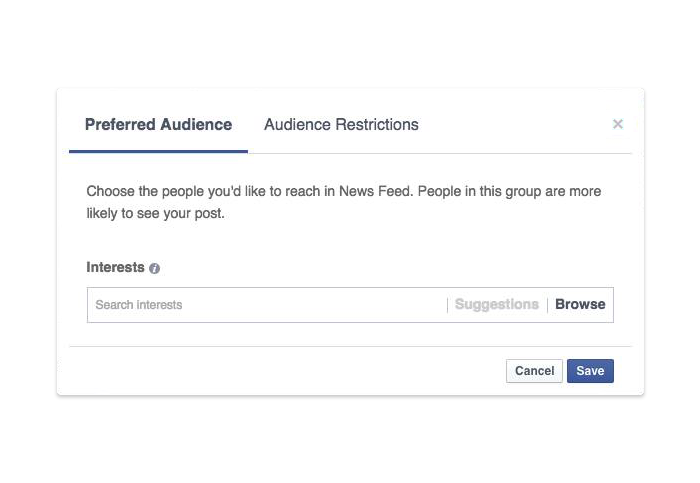
With this new tool, Facebook also promises better analytics and reach to people who are more likely to engage.
Sounds pretty great right?
Thankfully, it’s a free tool.
The tool is another way to organically target your Facebook posts to specific audiences like you do with ads, but without the cost:
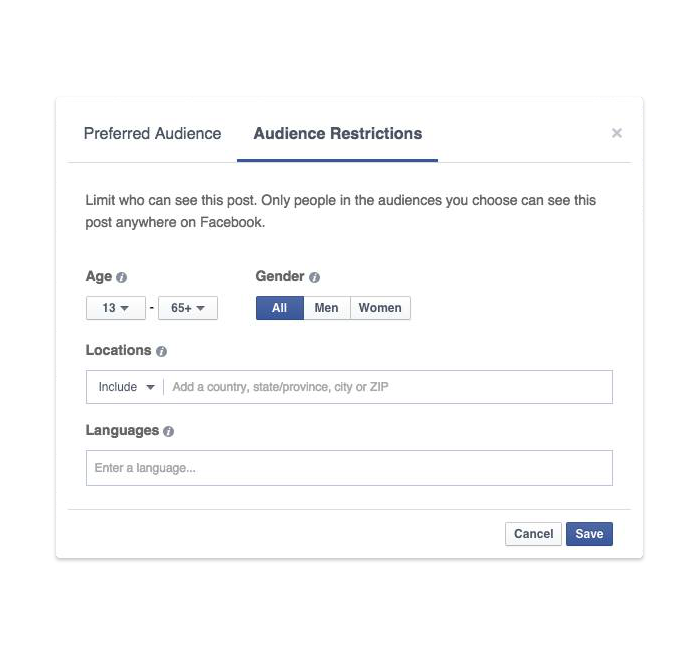
Just like you’d create a saved audience in Facebook Ads, you can create more specifically targeted posts for audience segments.
For example, if you run a Facebook page that appeals to multiple genders, like one dealing with clothing, you can target the organic post based on the content you are publishing.
If you publish an organic post about men’s clothing, you can make sure that only men see it.
If your company Facebook page has less than 5,000 likes, you need to activate this feature in your settings ASAP.
To do this, navigate to your page and click on the settings tab:
![]()
From here, select the “General” settings category and enable the “News Feed Audience and Visibility for Posts” setting:
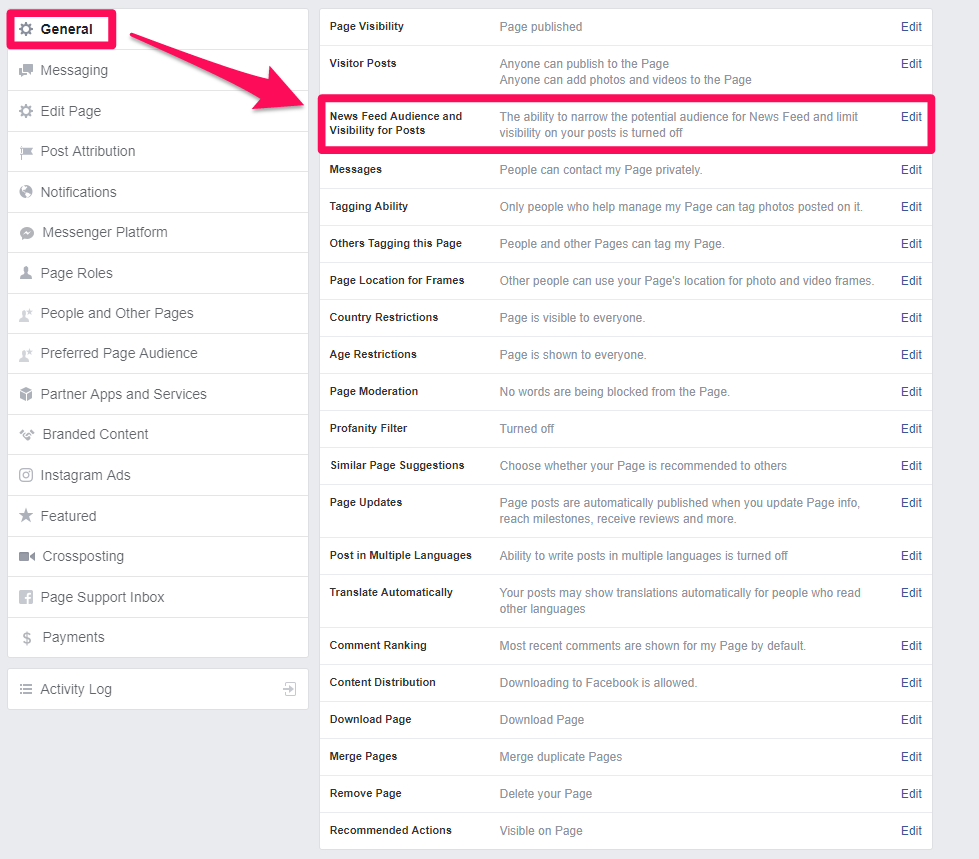
Click the checkbox and then save your changes to enable this audience-targeting option:

Once you’ve done this, you can go back to your page and create a new post.
You should immediately notice the audience-targeting options:
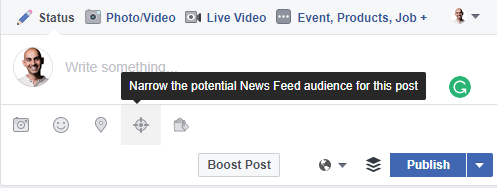
Click that target button to start optimizing your preferred audience settings:
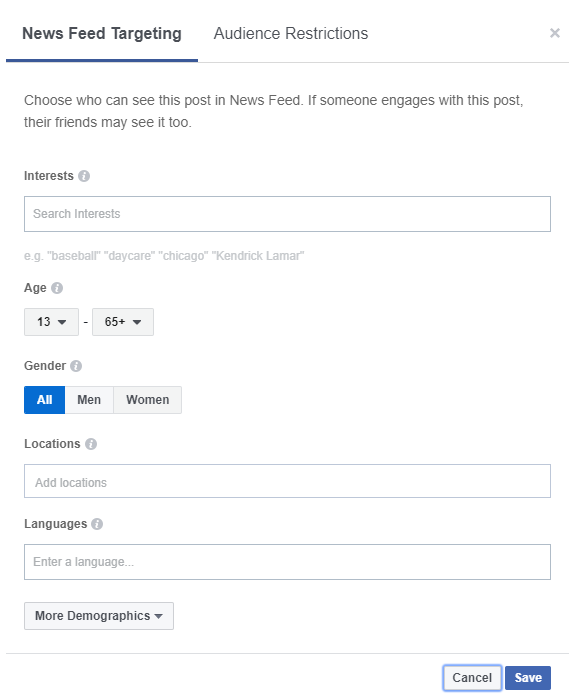
Select interests that line up with your specific post.
For example, if you are posting content marketing pieces about SEO, you’d want to select relevant interests like these:

You can also tweak your “Audience Restrictions” tab to limit who sees your content based on demographic data:
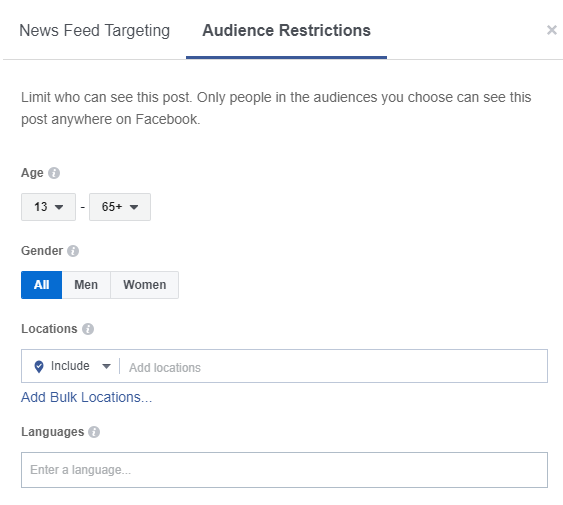
Now you can effectively boost your organic reach using the power of advertising-level targeting.
If you don’t want to optimize the audience targeting for every post, there’s actually a shortcut for it.
Navigate to your Page Manager and click on the settings tab:
![]()
Next, scroll down and click on the “Preferred Page Audience” tab:
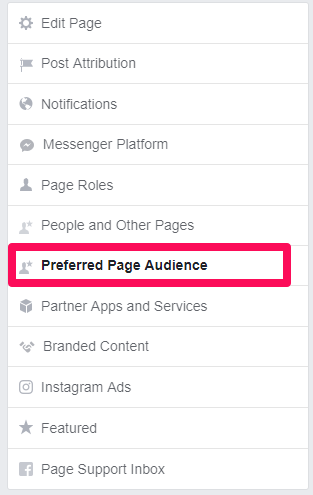
From here you can edit your general preferred audience.
You don’t need to select an audience every time you post if your audience is generally consistent.
From here you can edit locations, interests, age ranges, and language:
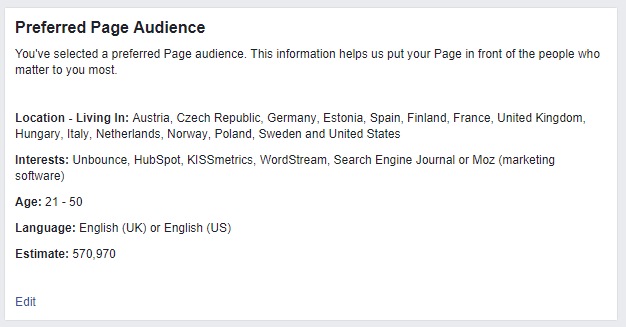
Simply click the “Edit” button at the bottom to change any of this information or add any further interests:
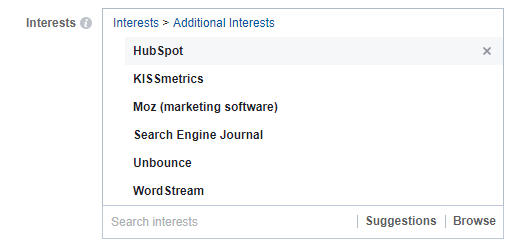
It looks exactly like creating a saved custom audience with Facebook Ads, but it helps you narrow down your organic reach and circumvent the system.
This will bring back some of your organic reach by targeting the most engaged visitors.
Organic reach is dying fast. Implement this tool under your settings tab to start reaching specific audience segments with ease.
2. Post more video content
If you log into Facebook and scroll down your news feed, what do you see?
I’d be willing to guess that a large portion of your page is filled with video content.
Why? Because videos on Facebook drive the most engagement, and when organic reach is dying, you need to use them.
On Facebook, video-based content receives an average of 400% more engagement than text-only content:
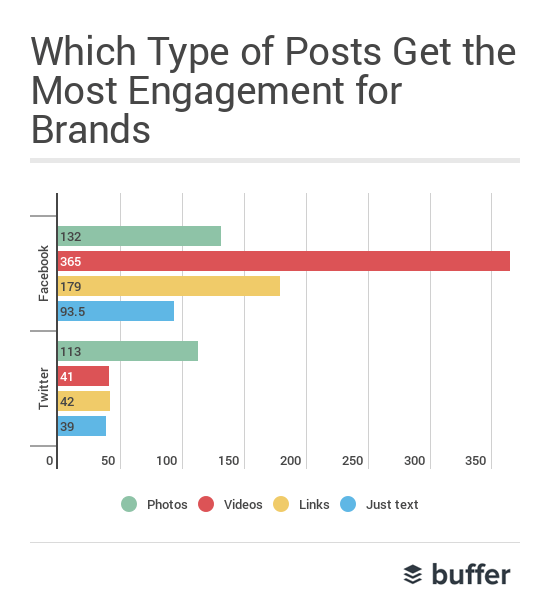
It even surpasses typical photo and link-based content.
It is hands-down the best content type to focus on with Facebook if you want more organic engagement and reach.
According to Facebook’s 2016 Q3 earnings report, only three million businesses are uploading video-based organic content on Facebook.
But that same report confirms that more than 60 million businesses are on Facebook currently.
That means the large majority of companies aren’t utilizing this strategy yet.
It also means it’s the perfect time for your business to jump on the video bandwagon and bring back your organic reach.
And video usage on Facebook is only increasing. In just a few months of 2016, viewership of live videos on Facebook grew by 3%.
Facebook did this by hiring and paying social media influencers to post live videos:
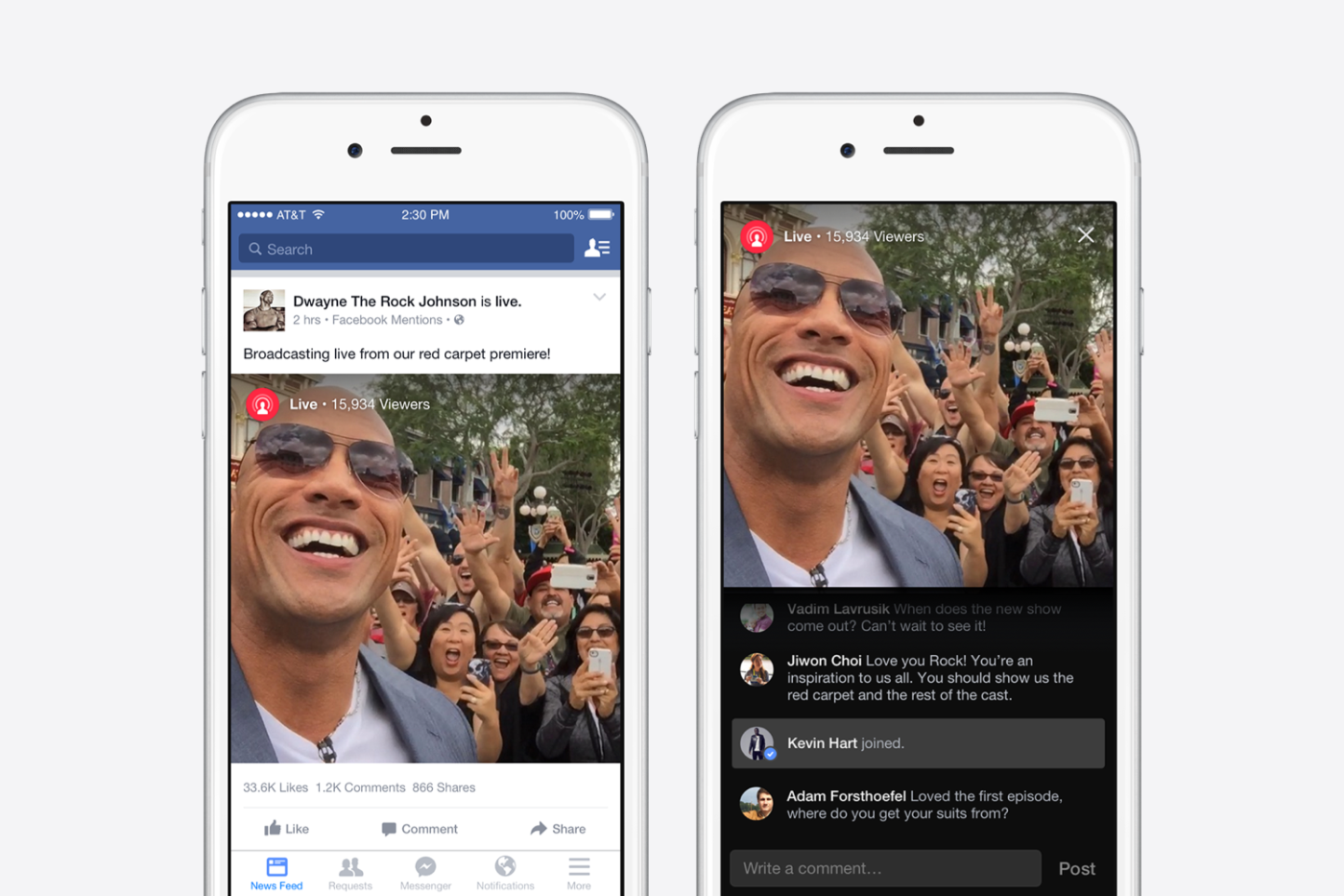
In fact, Facebook shelled out a total of $50 million to large publishers and celebrities to endorse it.
And it worked. According to Vibhi Kant, the product manager at Facebook, people spend 3x more time watching live videos on Facebook compared to non-live content.
It’s safe to say that organic engagement is at its best when video content is utilized.
That means using both live and static video can bring back your organic reach from the dead.
For creating amazing static videos, head over to InVideo and start using their tool today. InVideo makes it easy for anyone to create fun and engaging videos quickly and on a budget.
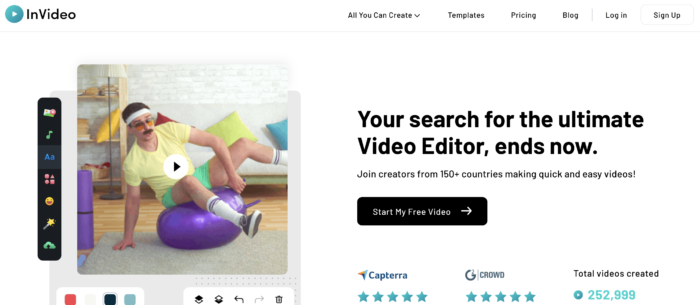
And what’s even better than that is you don’t need to have past experience producing and editing videos. You can use InVideo today and create a professional video without needing time to practice. It’s that easy.
To go live on Facebook, navigate to your company or business page and hit “Live Video” to begin a broadcast:

It’s that easy!
Use some of these tools to create awesome content for Facebook and save your organic reach.
3. Share your best content only
Quality over quantity is now key in terms of driving organic traffic with Facebook.
Focusing on better posts and putting them up less often actually nets better results.
Let me explain what I mean. According to Buffer, every 20 minutes on Facebook, there are more than one million links shared.
On top of that, 4.86 million photos are uploaded and nearly 800,000 status updates are created.
We are virtually drowning in a tidal wave of content.
Buffer noticed this and wanted to make a change. They started to cut their Facebook posting frequency by 50%:
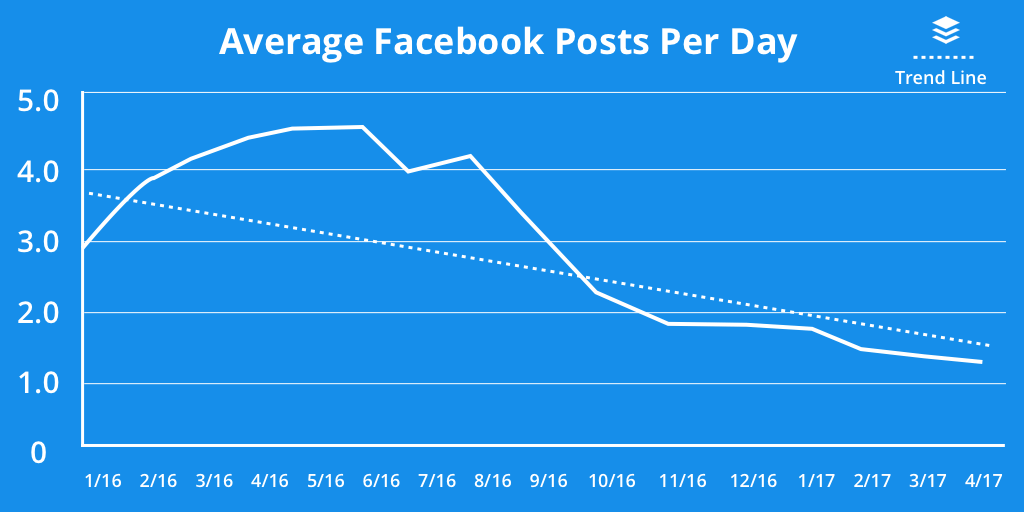
They were posting, on average, four or more posts per day, and started to drop that level to 1-2 posts per day.
Posting half as much content than they usually do, they actually drove higher reach rates and better engagement.
They found that the more they posted, the less reach they received.
In early 2016, they were posting 4x the content pieces per day. Now look at the graph trend when they dropped that number in 2017:
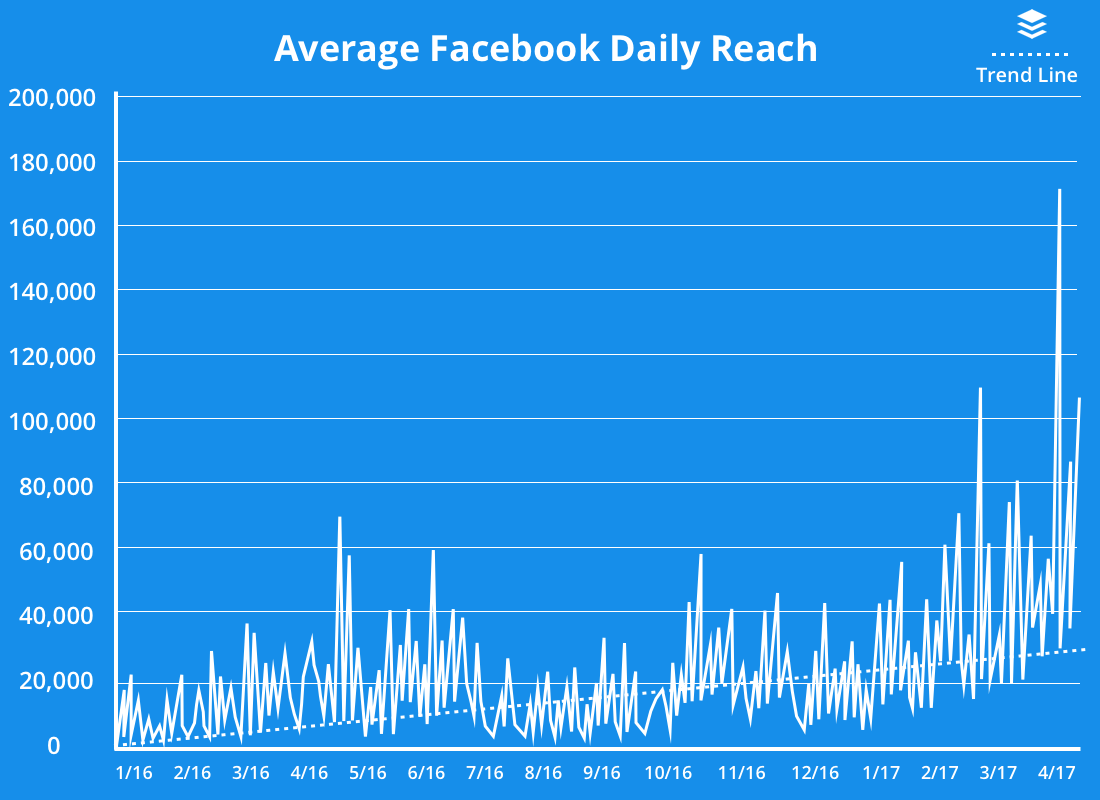
Their reach more than tripled from 44,000 to more than 150,000 people on Facebook per week.
All by decreasing their posting frequency by 50%.
They also saw huge increases in engagement with their posts:
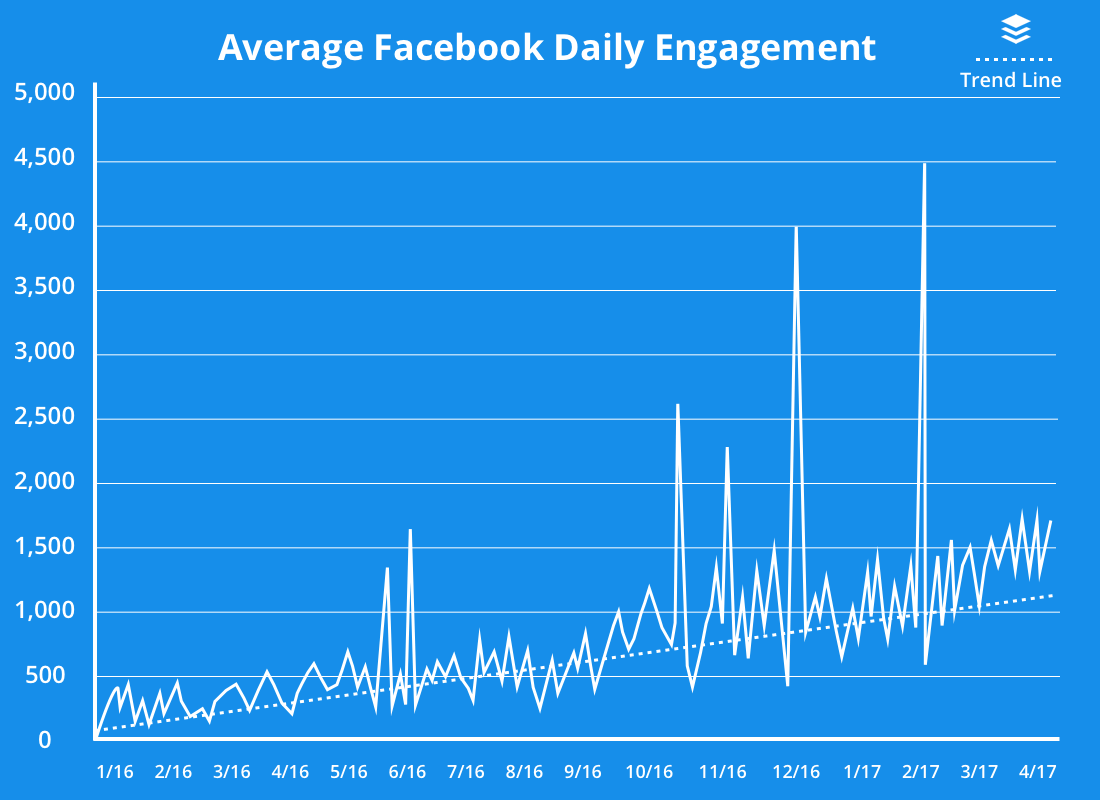
Average daily engagements with their Facebook content rose from under 500 to 1,000+.
Using a “less is more” strategy, they were able to prove that Facebook’s algorithm is hackable.
They found that posting less content can net better results.
So, that brings me to my next point:
Focus on posting your best content and only that content.
There is no need to post every new blog post on your Facebook page.
People simply don’t want to see it anymore. Instead, you should analyze your greatest stuff from other social channels and share the top-shelf posts on Facebook.
To do this, simply navigate to your Twitter account analytics and see what posts performed the best:
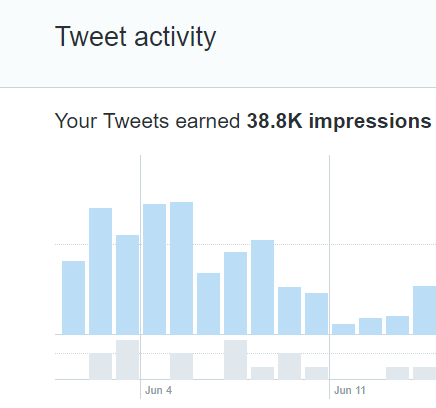
Pick out the posts that were the highest performers in terms of impressions and engagement levels.
This will help you weed out the underperforming posts that you don’t need to share on Facebook.
Use these top-shelf posts to share just 1-2 times a day on Facebook and increase your organic reach fast.
4. Invite engagements to like your page
What would you say if I told you that you can easily bring in tons of page likes and more actively-engaged users in just five minutes?
Would you think I was crazy?
Well, with Facebook’s “Invited to Like” button you can do just that.
When someone engages with your content on Facebook, you can actually bring them back to your page if they aren’t already a fan.
This strategy works for one simple reason:
The people you are inviting back to like your page have shown a proven interest in your organic content.
They are more likely to engage further with it.
Larry Kim of WordStream implemented this for his organic Facebook posts:
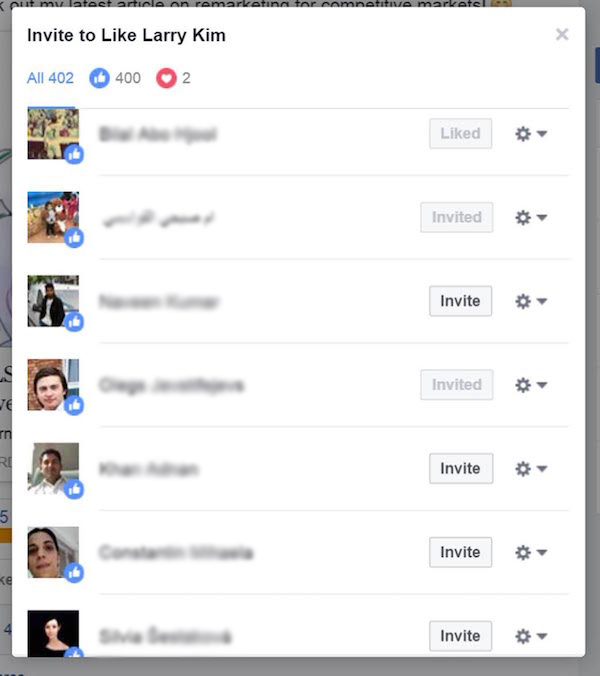
By doing this, he found a 15-20% conversion rate in acquiring and landing new page likes and fans.
He was able to bring back hundreds of people daily. But be aware: Larry says that there is a limit between 500 and 1,000 invites daily.
Be sure not to spam invites over this level or you risk getting flagged by Facebook.
He even started to receive direct messages from the people he invited that were thanking him for the page invite:
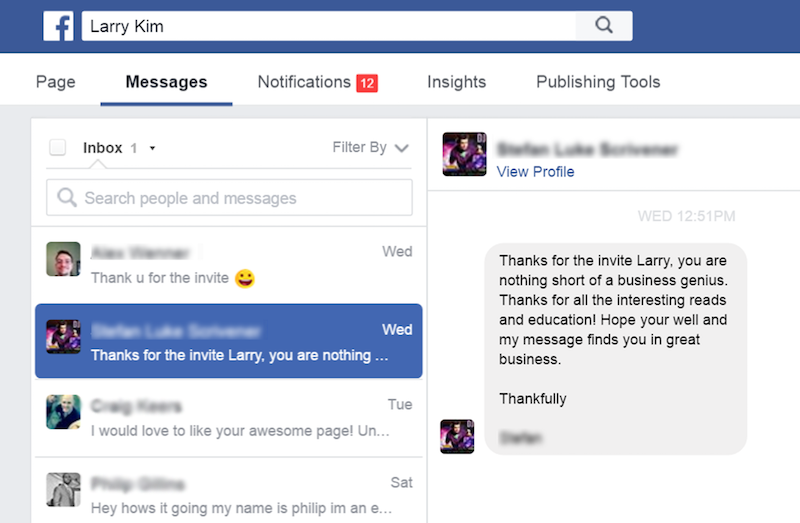
It essentially worked as a personalization tactic that made people feel special and drove likes to his page at the same time.
Thankfully for us, it’s really easy to implement. Head to your Facebook page and click on the reactions to one of your latest posts:
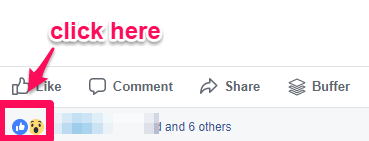
This will bring up a list of all of the people who liked, reacted, and engaged with that post.
From here, you can start to invite people to like your page by clicking “Invite:”
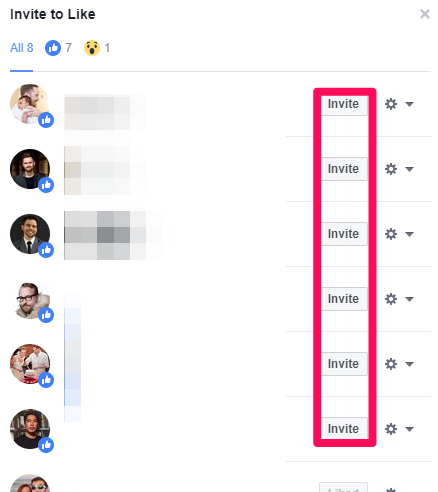
Doing this can generate massive amounts of likes in a short period of time.
And the great thing about this tool is that it won’t allow you to invite the user again, so you don’t risk spamming them.
It will notify you if they have already liked or been invited to like your page:

Inviting people that have previously liked your content is a great way to find more users who are already active on Facebook and with your content.
Resurrect your reach by using this tactic to build a bigger, hyper-engaged audience.
Conclusion
Facebook is the most popular, most widely-used social media platform ever.
Millions of companies advertise on the platform and run business-style pages to drive organic traffic.
The audience levels, features, and tools are unmatched by any other social network.
This is great for businesses and marketers — except when it comes to relying on organic reach.
Facebook’s organic reach has been in a steady decline since they announced the news back in 2013.
And that means that all of those fans and Facebook page likes you have are nearly useless now.
Facebook wants you to reach them via advertising instead.
But you already worked hard to get those fans. Tons of people (including me) even spent money to acquire those likes and fans.
So how do you circumvent the system and still bring in organic traffic?
Start by implementing preferred audience targeting. It’s one of the best and easiest ways to bring back your organic traffic.
It allows you to target organic posts just like you would with Facebook Ads.
Next, implement video-based content. It drives more engagement on Facebook than any other content type.
Be sure to share your best content if you want higher levels of engagement, too.
Lastly, use Facebook’s “Invite to Like” tool to bring in tons of new fans that are already engaging with your content.
Larry Kim used this tool and found a 15-20% conversion rate.
Bringing your organic reach back from the dead can take some work, but with these steps, you can do it and save some money on ad spend.
What are some of the best ways you reach organic fans today?










0 Comments